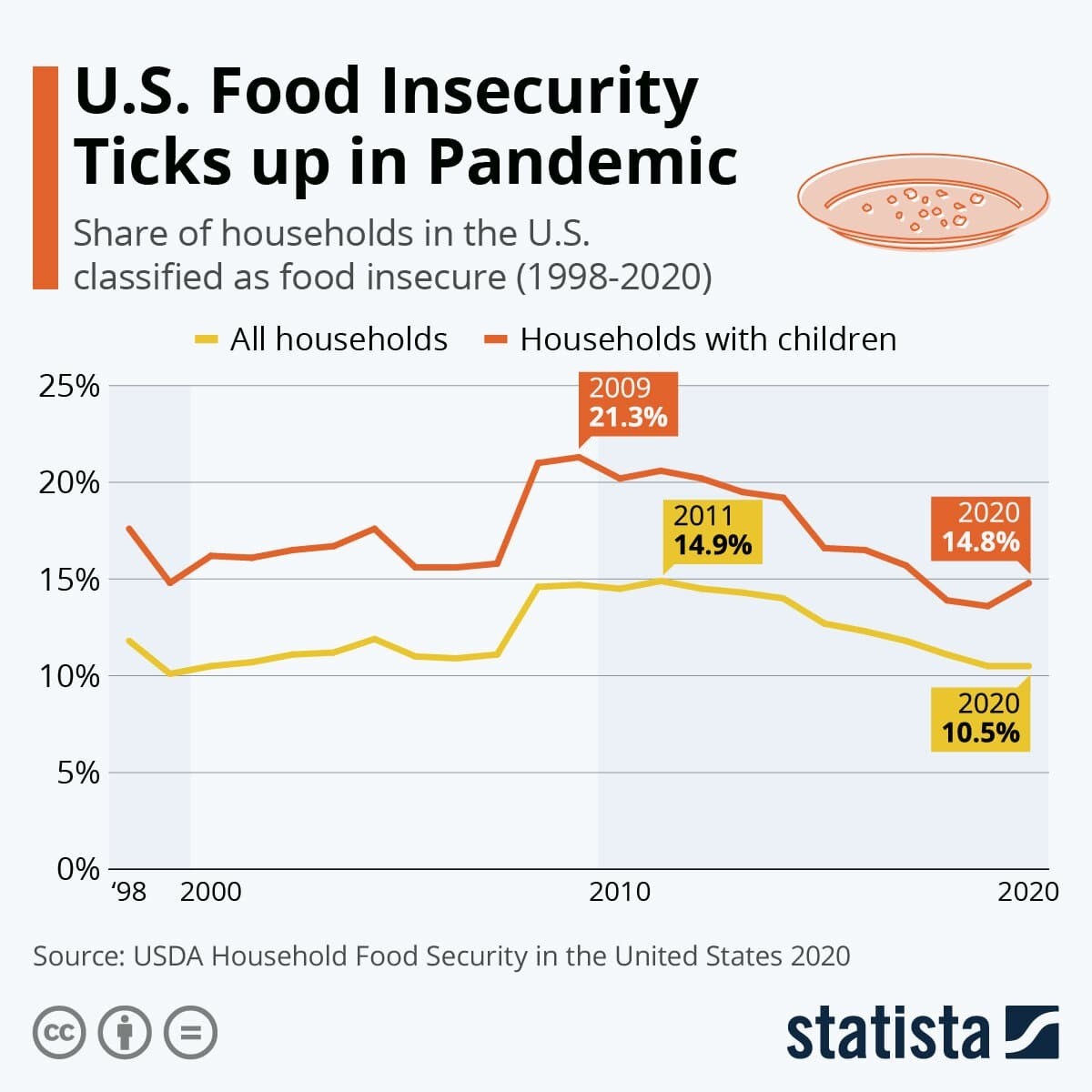How did COVID-19 spike U.S. food insecurity levels?

The report said that the lack of school lunches made food insecurity more severe.
Image: REUTERS/Fabrizio Bensch
Stay up to date:
United States
- Food insecurity increased in the US during 2020, according to a new report.
- Almost 15% of households with children were classified as food insecure by the USDA.
- Food insecurity is defined as experiencing difficulty to meet basic food needs in the span of one year.
- The report said that the lack of school lunches and the closure of businesses due to lockdowns made food insecurity more severe.
During the pandemic year of 2020, food insecurity ticked up in the United States, especially for households with children. Almost 15 percent of them were classified as food insecure by the USDA, defined as experiencing difficulty to meet basic food needs in the span of one year under a number of different conditions. In 2019, that share had been 13.6 percent. For all households, food insecurity exited its downwards trajectory in 2020, with 10.5 percent of all U.S. households being classified as food insecure, the same as the previous year.
While the share of food-insecure households did not rise in the U.S. in 2020, the share of adults living in them did - from 9.8 percent to 10.5 percent. The share of children living in a food-insecure household rose even more from 14.6 percent to 16.1 percent. However, according to the USDA, it was often the adults in food-insecure households who restricted food intake, while attempting to shield children – especially younger ones – from negative effects.

The report said that the lack of school lunches and the closure of businesses during coronavirus lockdowns made food insecurity more severe in 2020, while also pointing to federal and local government programs as well as the charitable sector as having already alleviated some of the year’s burden. The negative effects of the coronavirus pandemic on food security stayed behind those of the Great Depression between 2008 and 2011.
Household with children number around 38 million in the U.S., around 29 percent of all households, while children themselves make up around 22 percent of U.S. residents at 73 million.
Accept our marketing cookies to access this content.
These cookies are currently disabled in your browser.
Don't miss any update on this topic
Create a free account and access your personalized content collection with our latest publications and analyses.
License and Republishing
World Economic Forum articles may be republished in accordance with the Creative Commons Attribution-NonCommercial-NoDerivatives 4.0 International Public License, and in accordance with our Terms of Use.
The views expressed in this article are those of the author alone and not the World Economic Forum.
Forum Stories newsletter
Bringing you weekly curated insights and analysis on the global issues that matter.
More on Forum InstitutionalSee all
World Economic Forum
June 26, 2025
Pooja Chhabria and Gayle Markovitz
June 25, 2025
Pooja Chhabria and Gayle Markovitz
June 24, 2025
Pooja Chhabria and Gayle Markovitz
June 23, 2025
Pooja Chhabria and Christina Schunck
June 10, 2025
World Economic Forum
May 16, 2025





